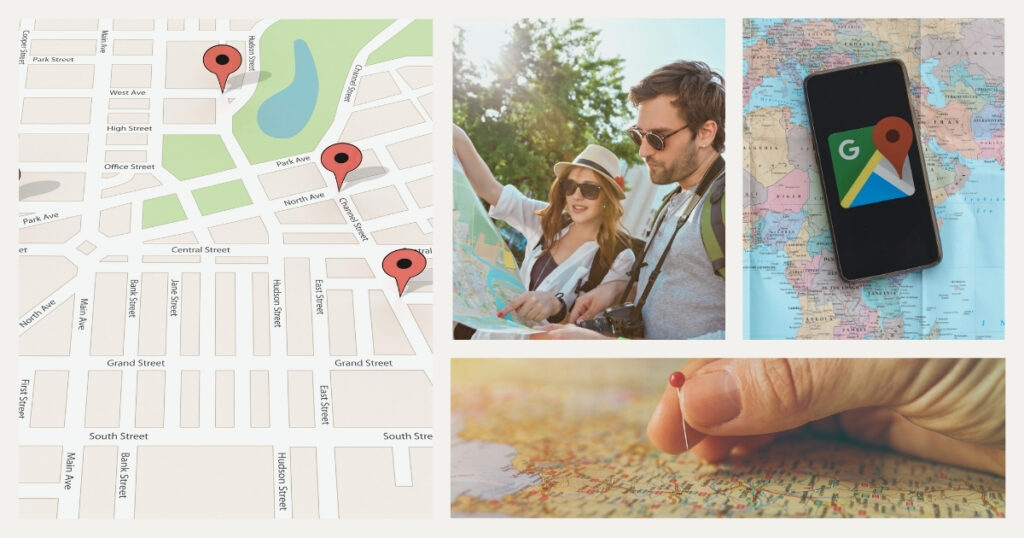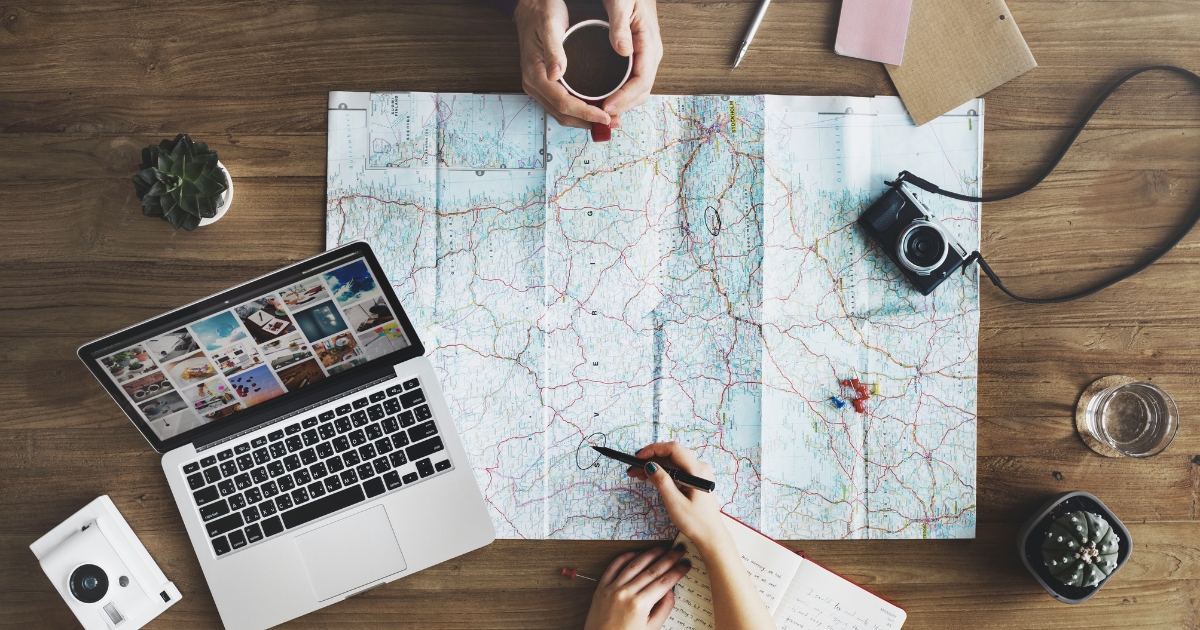For travelers, navigation is more than just moving from point A to point B. It is about finding coworking spaces, cafés with wifi, and avoiding traffic jams in cities you have never been to. That is why the debate Google Maps vs Waze matters so much.
Both apps are owned by Google, but they serve different purposes. So, is Waze better than Google Maps, or does Google Maps win for travelers on the go? Let’s dive in.
Google Maps: the all-in-one travel companion

Google Maps is not just for driving. It supports walking, cycling, and public transport, making it the most versatile choice for travelers who move between cities or even continents. With coverage in over 220 countries and territories, it is hard to beat its global reach.
Key advantages of Google Maps:
- Turn-by-turn navigation for cars, bikes, walking, and transit
- Reliable routes with historical and real-time traffic data
- Offline maps, essential for rural areas or weak wifi zones
- Local business reviews, coworking spaces, and cafés with wifi
- Street view, events, and neighborhood insights
🌟 Pro tip: before heading into rural zones, download offline maps. Unlike Waze, Google Maps still works without a data connection.
Waze: the real-time traffic expert

Waze is built for drivers. Powered by crowdsourced data, it constantly updates road conditions. If there is an accident, police checkpoint, or traffic jam ahead, Waze reroutes you instantly, often saving you minutes or even hours.
Key advantages of Waze:
- Real-time alerts for accidents, hazards, police, speed cameras
- Best for city driving and long road trips
- Voice customization and gamified interface
- Dynamic rerouting for the fastest arrival
🌟 Pro tip: Waze works best in regions with many active users, such as the us, Israel, and western Europe. In less populated areas, Google Maps is usually more reliable.
Side-by-side comparison: Google Maps vs Waze
| Feature | Google Maps | Waze |
|---|---|---|
| Traffic updates | Good, stable | Excellent, real-time |
| Modes of transport | Driving, walking, cycling, transit | Driving only |
| Offline maps | Yes | No |
| Local business info | Coworkings, cafés, reviews | Very limited |
| Interface | Clean and professional | Fun, colorful, interactive |
| Stops per trip | Up to 10 | Only 1 |
| Speedometer | Less precise | Generally more accurate |
Regional differences: Waze vs Google Maps in the UK and Europe

In London, Waze is extremely useful for avoiding congestion charges and traffic jams. But for public transport, walking, or finding coworking spaces, Google Maps is the clear winner.
In Europe, Waze works well in countries with a strong user base such as Spain, France, and Germany. In rural or Eastern Europe, Google Maps is more reliable thanks to offline maps.
💡Did you know? Google Maps now offers automatic translation of place names and directions, useful for international nomads in non-English speaking countries.
Insights from real users and experts

A 600-mile test drive (Autoevolution) showed Waze outperformed Google Maps in live traffic but struggled without stable data. Tom’s Guide highlights Google Maps as more complete and versatile, while Waze wins for personalization and fun.
On Reddit, users say: “Google Maps is significantly better overall, Waze is great for avoiding traffic and speed traps.” Houston Chronicle notes Waze’s popularity among commuters who appreciate its real-time alerts and creative reroutes.
Which is better for digital nomads

It depends on your travel style.
Choose Google Maps if you need offline maps, multi-modal transport, or want to find coworkings and wifi cafés.
Choose Waze if you rent cars often, drive in busy cities, and need live traffic and speed camera alerts.
Best approach: use both. Plan your day and explore with Google Maps, then switch to Waze when driving through traffic-heavy areas.
Final thoughts
The difference between Google Maps and Waze is clear. Google Maps is versatile and international, while Waze is hyper-focused on driving efficiency.
For digital nomads, the smartest strategy is to combine them.
- Google Maps for planning, exploration, and offline maps
- Waze for real-time driving efficiency
👉 And do not forget: reliable connectivity is key. Consider an esim like Holafly so your navigation apps never stop working. With the right setup, you will always know where you are going, whether it is to your next coworking space or your next big adventure.
Frequently asked questions about Google Maps vs Waze
Yes, you can. Many digital nomads rely on Google Maps for initial planning and location discovery, then switch to Waze when actually driving to benefit from its real-time traffic updates. This combination leverages the strengths of both apps and provides the most comprehensive navigation support during your travels.
Google Maps is significantly better for offline navigation, as it allows you to download entire city or regional maps for use without an internet connection. This feature is invaluable for digital nomads traveling to areas with limited connectivity or when trying to avoid excessive data charges. Waze requires a constant data connection to function properly.
Yes, Waze is available globally, but its effectiveness varies dramatically depending on the number of active users in a region. In countries with high user adoption like Israel, Canada, and parts of Western Europe, Waze provides excellent service. In regions with fewer users, its crowdsourced advantages diminish, making Google Maps the more reliable option for international digital nomads.
Google Maps has a significant advantage for digital nomads seeking workspaces. Its comprehensive search functionality allows you to find coworking spaces, cafés with WiFi, libraries, and business centers with detailed information about operating hours, amenities, and user reviews. You can quickly assess potential workspaces before visiting, saving valuable time when settling into a new location.
Google Maps performs substantially better in areas with limited connectivity thanks to its offline maps feature. These offline maps include essential information like roads, basic business details, and turn-by-turn directions. Waze, dependent on real-time data, functions poorly without a stable internet connection and offers no comparable offline capabilities, making it unsuitable for remote work in less-connected areas.
Yes, there are notable privacy differences between the apps. Waze collects more detailed data about your driving habits and location in real-time to provide its crowdsourced traffic information. Google Maps offers more granular privacy controls, including Incognito Mode and the ability to automatically delete location history after a specified period, which may be important for digital nomads handling sensitive client information.
It depends on your needs. Waze is better for real-time traffic alerts, rerouting, and speed camera notifications, while Google Maps is better for offline use, walking, cycling, and public transport directions.
Yes, in many countries Google Maps now shows speed cameras and speed limits directly on the driving screen. Availability depends on local regulations.
Waze generally uses more mobile data because it constantly uploads and downloads real-time traffic reports. Google Maps uses less data, especially if you download offline maps in advance.
Yes, Waze is legal in the UK. Drivers can legally use its speed camera alerts, although the government has occasionally debated restrictions.
Google Maps dominates with over 1 billion monthly active users worldwide, while Waze has around 140 million active users. However, Waze’s community is especially strong among daily commuters and delivery drivers.



